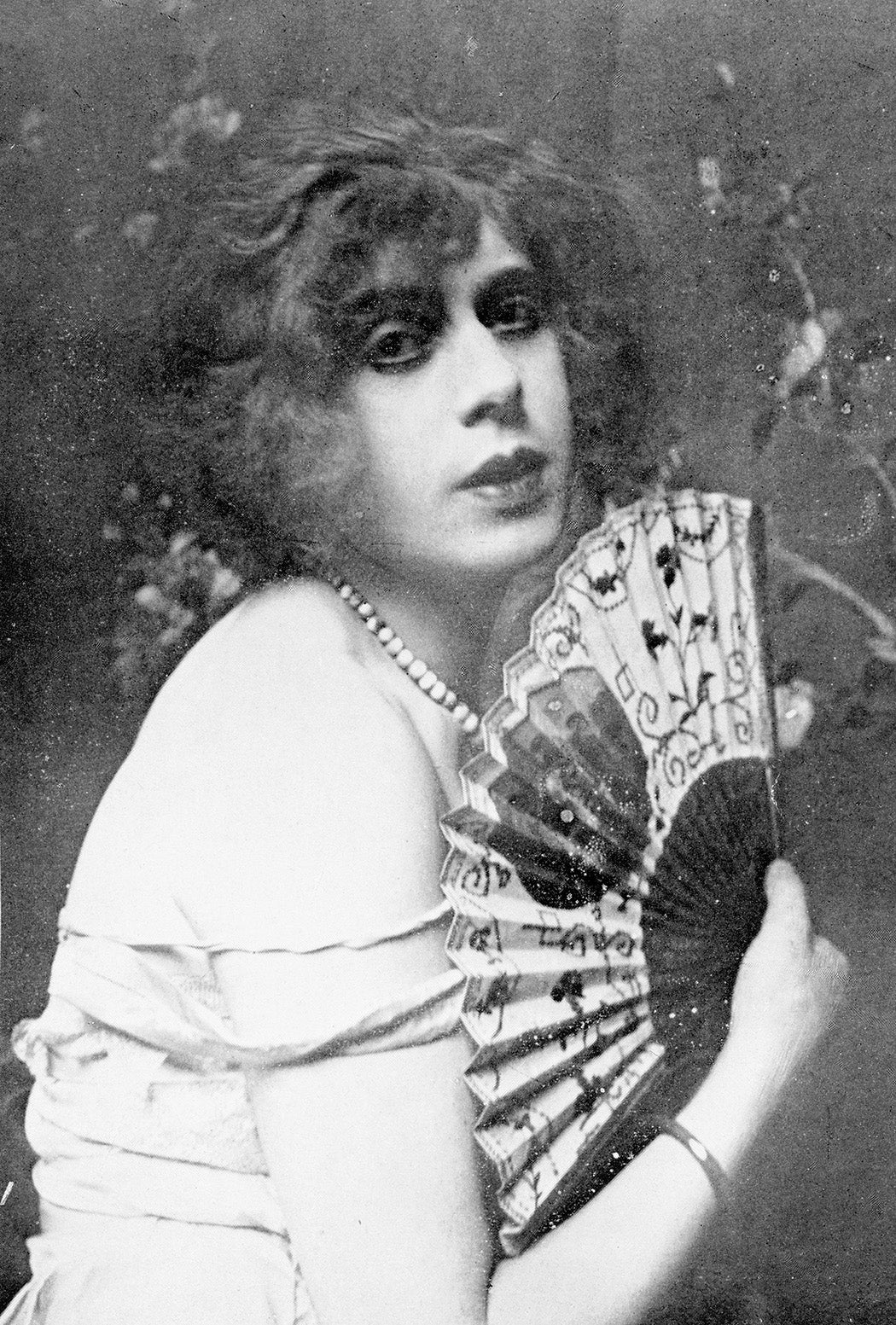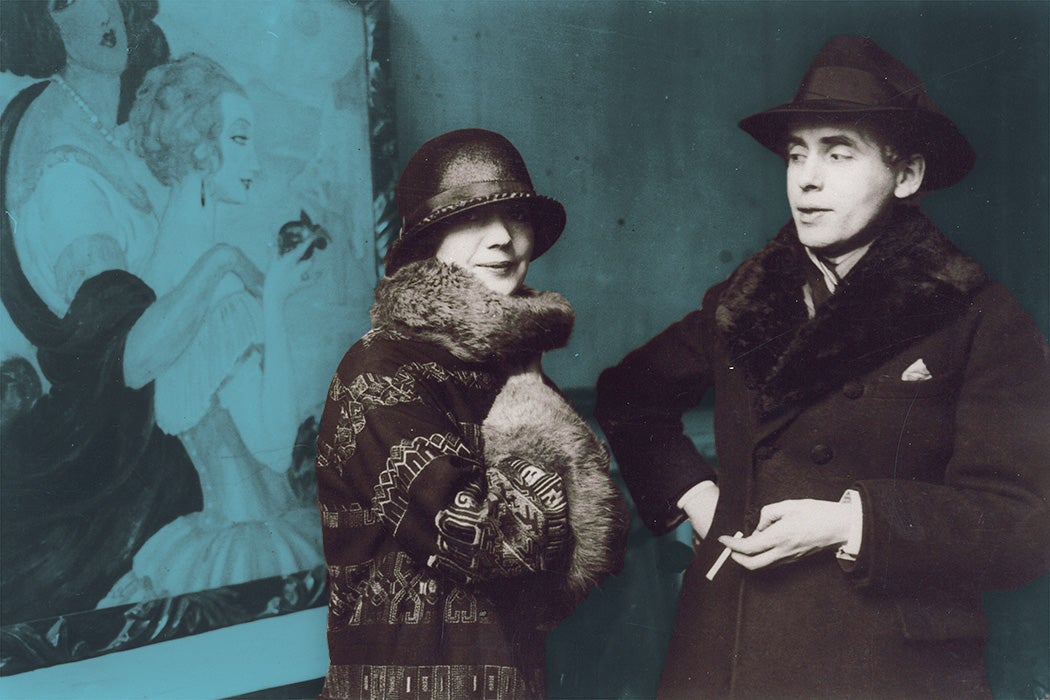David Ebershoff’s novel, The Danish Girl, published in 2000, may make an entertaining read, but its historic accuracy has been as hotly debated as the gender politics surrounding the real-life case of Lili Elbe (1882–1931). Elbe, a Danish-born transgender woman, famously surrendered both her happy marriage and her successful artistic career in order to transition in the early twentieth century. But where The Danish Girl—many spoilers ahead—really stretches facts for dramatic appeal, and perhaps for some generous wishful thinking from the author, is in the storyline of Elbe’s spouse, Gerda Wegener (1886–1940).
Wegener and Elbe married in 1904, when Elbe still identified as a male and was going by her birthname, Einar Wegener. As art historian Inga Christensen details, they were both talented artists and tag-teamed to earn a living through a series of prestigious commissions in their home country of Denmark. Both the novel The Danish Girl and director Tom Hooper’s 2015 film adaption get that right. They also correctly depict the couple’s move to Paris in 1912 when conservative Denmark didn’t accept Elbe’s early stages of male-to-female transition.
In Paris, Elbe and Wegener were readily embraced by a thriving avant-garde community. Elbe eventually gave up painting in order to become an artist’s model—specifically, her wife’s model. She posed for a popular series of jazzy, eroticized portraits in the Art Deco style that simultaneously fascinated and fooled the world.

Wegener, through her paintings, was trying to tell Elbe’s story in her (their) own way. Modernist scholar Pamela L. Caughie, drawing on the work of Tim Armstrong and Elbe’s own memoirs, comments on the dynamic between Elbe and Wegener. When Wegener claims that she “feels as if she is creating the hypostatic Lili and not just the figure who appears on her canvas, she affirms Armstrong’s comment that the narrative ‘reflects on the construction of gender as an ‘artistic process.’” The creation of Elbe—out of pigments, out of Einar—thus seems to be “as much a matter of art and artistry as of science.”
David Ebershoff, writing about a century later, pulled a similar artist’s trick with The Danish Girl. But in addition to reinventing Elbe, he also reinvented Wegener, embracing fiction over fact. For instance, he erased Wegener’s lesbianism, portraying her as staunchly heterosexual. And at the end of the novel, after Wegener and Elbe separate for good, Ebershoff matches her with Elbe’s childhood friend Hans. Elbe is paired with a nice man and set up for a fairytale future as well.
Weekly Newsletter
In reality, in 1931, the same year of Elbe’s early death from sex reassignment surgery complications, Wegener married Major Fernando Porta, a swindler who quickly drained the fabulous wealth she’d amassed from her success in the art world. He left her broke, broken, and alcoholic. It’s nowhere near close to the optimistic ending devised by Ebershoff and the Hollywood filmmakers.
Because he omitted Wegener’s real-world sexual identity, some have accused Ebershoff of being homophobic. Others have been more forgiving and have congratulated him on providing Wegener with the happy ending she deserved. Whatever one’s interpretation of this, there’s no denying that Ebershoff can at least claim some credit for drawing Elbe and Wegener’s nearly forgotten stories, and art, back in front of the public’s eyes.
Support JSTOR Daily! Join our membership program on Patreon today.







